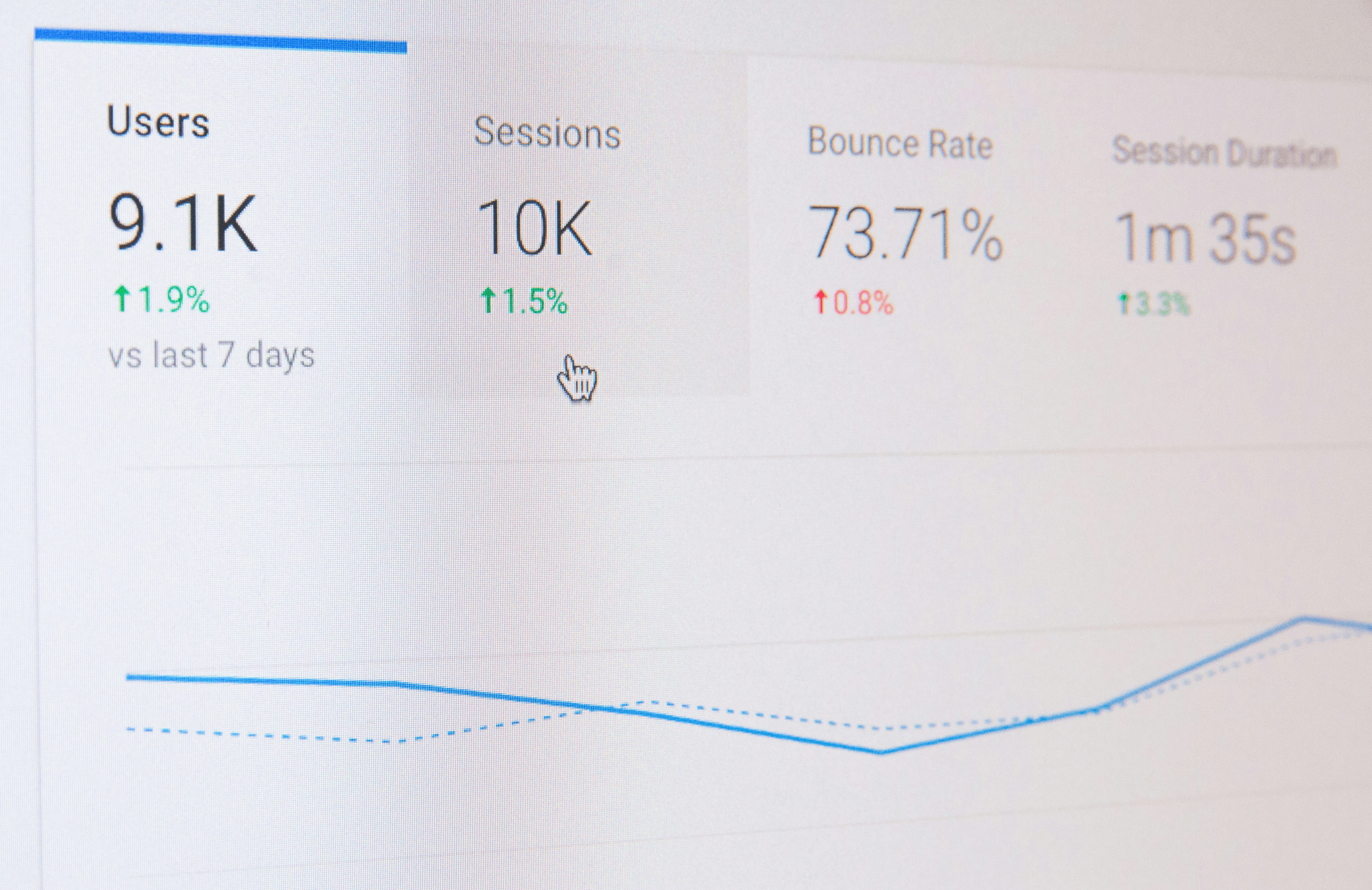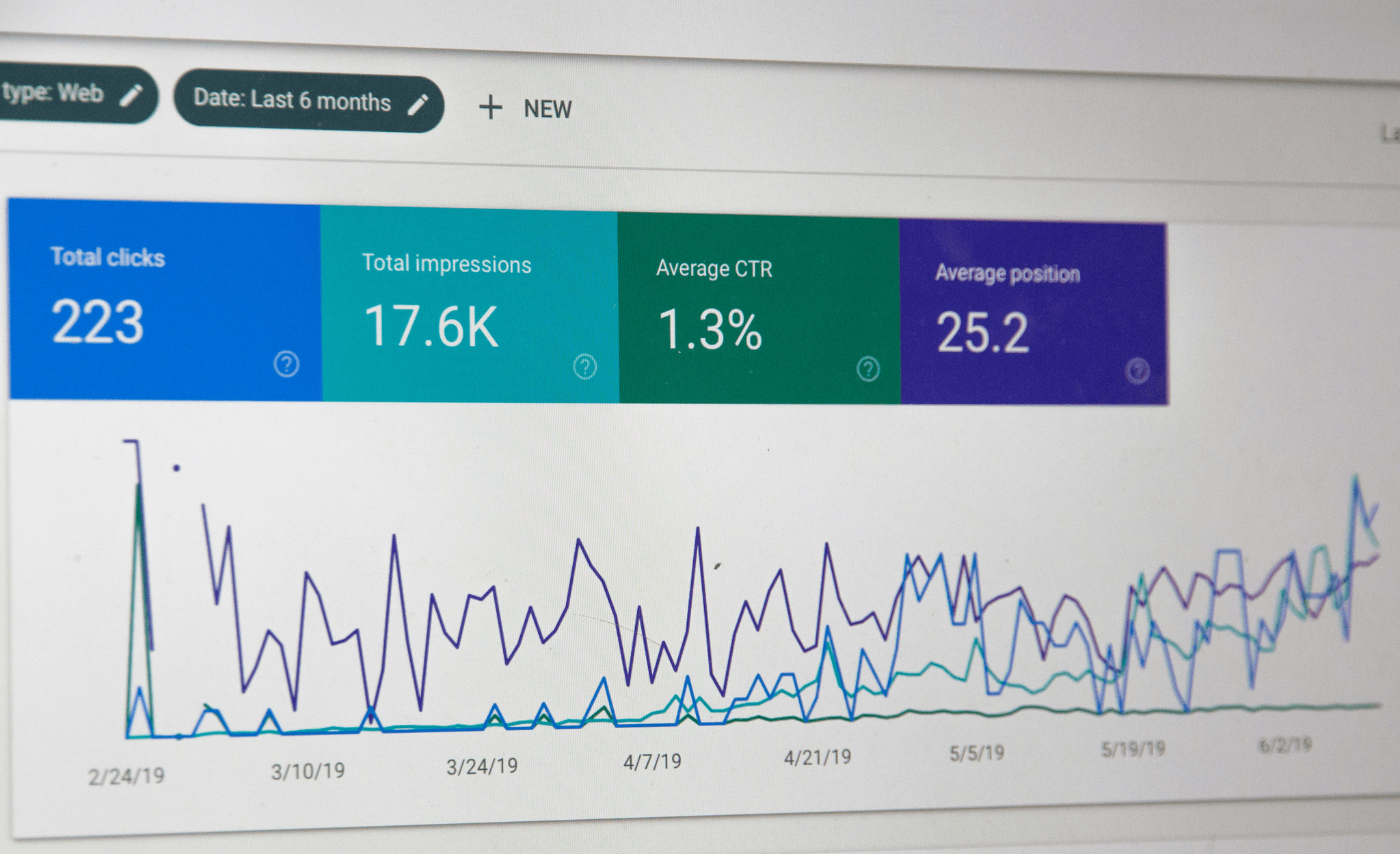Introduction
In today's fast-paced business landscape, understanding and effectively utilizing key performance indicators (KPIs) for vendor management is crucial for organizations aiming to thrive. KPIs serve as the compass guiding businesses through the complex waters of vendor relationships, ensuring that every partnership aligns with strategic goals and delivers value. Without a clear framework of KPIs, companies risk mismanagement and missed opportunities in their vendor collaborations.
Why KPIs Matter in Vendor Management
KPIs for vendor management provide measurable insights that help businesses evaluate their vendors' performance and make informed decisions. By establishing these metrics, organizations can identify areas for improvement, streamline operations, and foster stronger partnerships. Ultimately, well-defined KPIs can lead to enhanced efficiency, reduced costs, and improved service delivery across the supply chain.
The Role of SSOURCING INC. in Driving Success
At SSOURCING INC., we recognize that leveraging KPIs is essential to driving success in vendor management strategies. Our approach integrates these critical metrics into our processes to ensure that each vendor relationship contributes positively to our clients' objectives. By focusing on data-driven decision-making, we empower businesses to optimize their vendor interactions and achieve sustainable growth.
Key Trends Influencing Vendor Management KPIs
The landscape of vendor management is continuously evolving due to emerging trends such as digital transformation and sustainability initiatives. Organizations are increasingly adopting advanced analytics tools to refine their KPIs for vendor management, allowing them to gain real-time insights into performance metrics. Additionally, the growing emphasis on collaboration over transactional relationships is reshaping how businesses define success with their vendors.
Defining KPIs for Vendor Management

In the realm of vendor management, defining effective Key Performance Indicators (KPIs) is crucial for measuring success and driving performance improvements. KPIs for vendor management serve as benchmarks that help organizations assess their suppliers' efficiency, quality, and reliability. By establishing clear and relevant KPIs, businesses can ensure that they are aligned with their strategic goals while fostering better relationships with their vendors.
What Constitutes an Effective KPI
An effective KPI for vendor management is specific, measurable, attainable, relevant, and time-bound (SMART). This means that each KPI should clearly define what is being measured and how it will be evaluated over a specified timeframe. Moreover, an effective KPI should provide actionable insights that enable organizations to make informed decisions about vendor performance and drive continuous improvement.
To illustrate this further, consider a KPI focused on delivery times. If the goal is to improve on-time delivery rates by 15% within six months, this metric becomes a powerful tool for assessing vendor performance. SSOURCING INC. emphasizes the importance of selecting KPIs that not only measure outcomes but also reflect the strategic objectives of your organization.
Different Categories of Vendor Management KPIs
Vendor management KPIs can be categorized into several key areas: operational efficiency, quality assurance, financial performance, and relationship management. Operational efficiency metrics might include lead times or order accuracy rates—both essential for gauging how well vendors fulfill their commitments. Quality assurance metrics could involve defect rates or compliance with specifications to ensure products meet required standards.
Financial performance indicators often focus on cost savings achieved through negotiations or overall spend analysis with vendors; these figures are vital in understanding the economic impact of supplier relationships. Lastly, relationship management metrics such as communication frequency or satisfaction scores help assess the health of partnerships over time. By utilizing various categories of KPIs for vendor management, companies like SSOURCING INC. can develop a comprehensive view of their supply chain dynamics.
Aligning KPIs with Business Objectives
Aligning your KPIs for vendor management with broader business objectives is essential for ensuring that every measurement contributes to organizational success. This alignment helps create a cohesive strategy where each department understands its role in achieving common goals—ultimately leading to improved collaboration between teams and vendors alike.
For instance, if a company aims to enhance customer satisfaction by reducing product defects by 20%, it’s crucial to establish quality-related KPIs that directly support this objective while engaging vendors in the process. SSOURCING INC.'s approach focuses on integrating these measurements into regular reviews so that both internal stakeholders and external partners are held accountable in achieving shared targets.
By defining effective KPIs tailored specifically for vendor management needs while aligning them with overarching business goals, organizations can create a robust framework that drives both accountability and success in supplier relationships.
Measuring Vendor Performance

Measuring vendor performance is essential for ensuring that your partnerships yield the desired results. By establishing clear KPIs for vendor management, businesses can track progress and make informed decisions that drive success. SSOURCING INC. emphasizes the importance of a structured approach to measuring vendor performance, as it helps identify areas for improvement and fosters accountability.
Key Performance Metrics to Track
To effectively gauge vendor performance, it's crucial to select key performance metrics that align with your business goals. Common KPIs for vendor management include on-time delivery rates, product quality scores, and cost efficiency ratios. Tracking these metrics allows organizations to assess whether their vendors are meeting expectations and contribute to strategic decision-making.
In addition, customer satisfaction ratings can also serve as a vital KPI for vendor management by providing insights into how well vendors meet end-user needs. Regularly monitoring these key metrics enables businesses to maintain strong relationships with their vendors while ensuring continuous improvement in service delivery. With SSOURCING INC.'s expertise in developing tailored KPI frameworks, companies can optimize their vendor management strategies effectively.
Using Dashboards for Real-Time Insights
Dashboards are invaluable tools in measuring vendor performance as they provide real-time insights into various KPIs for vendor management at a glance. By consolidating data from multiple sources into a single visual interface, dashboards allow stakeholders to monitor key metrics efficiently and make timely adjustments as needed. SSOURCING INC.'s dashboard solutions empower organizations with the ability to visualize trends and identify potential issues before they escalate.
Moreover, interactive dashboards facilitate collaboration among teams by promoting transparency in tracking vendor performance across departments. This collaborative approach not only enhances communication but also drives collective accountability towards achieving business objectives related to vendor management KPIs. In the fast-paced world of supply chain operations, having access to real-time data is essential for maintaining a competitive advantage.
Case Study: How Amazon Optimizes Vendor Performance
Amazon stands out as a prime example of how effective measurement of vendor performance can lead to significant operational success. The e-commerce giant employs an extensive array of KPIs for vendor management that includes inventory turnover rates and order accuracy percentages, enabling them to optimize their supply chain processes continuously. By leveraging advanced analytics tools and dashboards, Amazon ensures that its vendors consistently meet stringent performance standards.
Furthermore, Amazon's commitment to transparency fosters strong relationships with its vendors while driving improvements in efficiency and cost-effectiveness across its network. The company's focus on regular feedback loops allows it not only to address issues promptly but also to encourage innovation within its supply chain ecosystem—a win-win situation! By learning from Amazon's strategies, businesses can adopt similar methodologies through SSOURCING INC.'s tailored solutions designed specifically for enhancing vendor management practices.
Vendor Relationship Management

In the world of vendor management, fostering strong relationships is just as crucial as tracking KPIs for vendor management. Effective communication and feedback loops not only enhance collaboration but also ensure that vendors are aligned with your business objectives. By prioritizing these elements, businesses can create a more resilient and responsive supply chain.
Importance of Communication and Feedback
Communication is the lifeblood of any successful vendor relationship. Regular check-ins and open channels for feedback allow both parties to address concerns proactively, enhancing trust and transparency. Furthermore, when organizations actively solicit feedback from their vendors, they can gain valuable insights that help refine their KPIs for vendor management.
Feedback mechanisms should be structured yet flexible enough to adapt to changing circumstances. By creating an environment where vendors feel comfortable sharing their challenges and successes, businesses can foster a culture of continuous improvement. This not only strengthens partnerships but also ensures that KPIs for vendor management remain relevant and effective over time.
Long-Term Benefits of Strategic Partnerships
Building strategic partnerships with vendors comes with a myriad of long-term benefits that extend far beyond immediate cost savings. When both parties invest in each other's success, they create a symbiotic relationship that drives innovation and efficiency across the supply chain. This alignment often leads to better pricing structures, improved service levels, and ultimately more favorable KPIs for vendor management.
Moreover, strategic partnerships enable businesses to leverage shared resources and expertise for mutual growth. Vendors become more than just suppliers; they transform into collaborators who contribute to product development or market expansion strategies. As such, aligning KPIs with these long-term objectives becomes essential for sustaining these relationships.
Example: How Apple Manages Vendor Relationships
Apple is renowned not only for its innovative products but also for its exemplary vendor relationship management practices. The tech giant employs rigorous communication strategies that keep its suppliers informed about performance expectations while encouraging open dialogue about challenges faced in production processes. By utilizing detailed KPIs for vendor management, Apple ensures that all stakeholders are on the same page regarding quality standards and delivery timelines.
Additionally, Apple invests in training programs designed specifically for its vendors to enhance their capabilities further—demonstrating a commitment to mutual growth rather than transactional interactions alone. This approach has resulted in a robust network of suppliers who are well-equipped to meet Apple's high standards while contributing positively to overall performance metrics.
In conclusion, effective vendor relationship management hinges on strong communication channels and strategic partnerships built on trust and shared goals. By focusing on these elements alongside relevant KPIs for vendor management, companies like SSOURCING INC can cultivate lasting relationships that drive success across the board.
Risk Management in Vendor Operations

In the intricate world of vendor management, risk is an ever-present shadow that can disrupt operations and impact the bottom line. Identifying potential risks and implementing strategies to mitigate them is crucial for maintaining a resilient supply chain. With the right KPIs for vendor management, organizations can proactively address vulnerabilities before they escalate into significant issues.
Identifying and Mitigating Vendor Risks
Identifying vendor risks involves a thorough assessment of both internal and external factors that could affect performance. These may include financial instability of vendors, compliance issues, or geopolitical factors that could disrupt supply chains. Once identified, organizations can utilize KPIs for vendor management to monitor these risks closely and develop mitigation strategies tailored to specific vulnerabilities.
Mitigation may involve diversifying suppliers, establishing contingency plans, or enhancing communication channels with vendors. By fostering transparency and collaboration with vendors, businesses can create a proactive environment where risks are managed effectively. SSOURCING INC. emphasizes the importance of continuous monitoring to ensure that risk management strategies remain relevant as market conditions evolve.
KPIs that Help Manage Supply Chain Risks
KPIs for vendor management play a pivotal role in tracking risk factors within the supply chain ecosystem. Metrics such as on-time delivery rates, quality defect rates, and financial stability scores provide insights into potential vulnerabilities associated with vendors. By regularly analyzing these KPIs, businesses can identify patterns indicative of rising risks and take corrective actions before problems arise.
Additionally, incorporating lead time variability as a KPI allows organizations to gauge how fluctuations in delivery schedules might impact overall operations. Monitoring these metrics not only enhances operational efficiency but also supports strategic decision-making regarding supplier relationships. SSOURCING INC.'s focus on data-driven insights ensures businesses are equipped with the tools needed to navigate complex vendor landscapes effectively.
Real-World Example: How Toyota Handles Vendor Risks
Toyota serves as a prime example of effective risk management in vendor operations through its renowned Just-In-Time (JIT) production system. This approach requires close collaboration with suppliers while emphasizing quality control at every level of production—making Toyota acutely aware of potential risks associated with its vendors. By using specific KPIs for vendor management, such as supplier performance metrics and inventory turnover rates, Toyota has successfully minimized disruptions while optimizing efficiency.
In addition to stringent evaluation processes for new suppliers, Toyota maintains open lines of communication to foster trust and transparency throughout its supply chain network. This proactive stance enables them to quickly address any emerging issues before they escalate into larger problems—ultimately safeguarding their reputation for quality manufacturing across the globe. Companies like SSOURCING INC., which draw inspiration from Toyota's practices, recognize that robust risk management frameworks are essential for long-term success.
Continuous Improvement and KPIs

In the ever-evolving landscape of vendor management, continuous improvement is essential for maintaining competitive advantage. This means regularly reviewing and adjusting KPIs for vendor management to ensure they remain relevant and effective. By embracing a culture of ongoing evaluation, organizations can better respond to changes in the market and optimize their vendor relationships.
Importance of Reviewing and Adjusting KPIs
Reviewing and adjusting KPIs is not just a routine task; it's a strategic necessity that can significantly impact vendor performance. As business objectives evolve, so should the metrics used to measure success. Regularly revisiting these KPIs ensures they align with current goals, allowing organizations to proactively address any performance gaps in their vendor management strategies.
Moreover, an outdated KPI can lead to misguided efforts that waste resources rather than drive value. For instance, if a KPI focuses solely on cost reduction without considering quality or service levels, it may result in poor vendor performance overall. Therefore, incorporating feedback loops into your review process will help you refine your KPIs for vendor management effectively.
Using Data Analytics for Vendor Performance
Data analytics plays a pivotal role in enhancing the effectiveness of KPIs for vendor management by providing actionable insights that drive decision-making. By leveraging advanced analytics tools, organizations can track performance trends over time and identify areas requiring attention or improvement. These insights enable businesses to make data-driven adjustments that enhance overall vendor efficiency.
For example, predictive analytics can forecast potential issues before they escalate into significant problems, allowing companies to take preventive measures early on. Additionally, real-time data visualization through dashboards empowers teams to monitor key metrics at a glance—ensuring everyone stays aligned with organizational objectives regarding vendors' performance metrics. SSOURCING INC.'s commitment to integrating data analytics into its processes allows clients to continuously optimize their vendor relationships.
Example: How Starbucks Innovates Vendor Management
Starbucks stands out as an exemplary case when it comes to innovating its approach toward managing vendors effectively using KPIs for vendor management. The coffee giant employs sophisticated analytics tools that enable it to track various performance metrics across their supply chain dynamically. By focusing on sustainability as part of their KPI framework—such as sourcing ethically produced coffee—they not only enhance brand reputation but also foster stronger relationships with vendors who share similar values.
Moreover, Starbucks regularly reviews its KPI benchmarks based on changing market dynamics and customer preferences—ensuring they remain ahead of the curve in both product offerings and operational efficiency. Their proactive stance on continuous improvement has played a crucial role in maintaining high-quality standards while nurturing long-term partnerships with suppliers who contribute positively toward these goals.
Conclusion

In the dynamic world of vendor management, the significance of KPIs cannot be overstated. As businesses navigate an increasingly complex supply chain landscape, understanding how to leverage effective KPIs for vendor management will be crucial for success. The evolution of these metrics promises a future where companies can anticipate challenges and seize opportunities with agility.
The Future of KPIs in Vendor Management
Looking ahead, the future of KPIs in vendor management is set to become even more data-driven and integrated with advanced technologies. Companies will increasingly rely on real-time data analytics to refine their strategies, ensuring that their kpi for vendor management are not just reactive but predictive. This proactive approach will enable organizations to optimize performance and foster stronger relationships with their vendors.
How SSOURCING INC. Can Help Your Business
At SSOURCING INC., we specialize in helping businesses develop tailored KPI frameworks that align seamlessly with their strategic goals. Our expertise ensures that your kpi for vendor management are not only relevant but also actionable, allowing you to track performance effectively and make informed decisions. With our support, you can transform your vendor relationships into strategic partnerships that drive growth and innovation.
Final Thoughts on Vendor Management Success
In conclusion, mastering the art of KPI development is essential for any organization looking to excel in vendor management. By focusing on well-defined kpi for vendor management and leveraging insights from data analytics, businesses can enhance their operational efficiency while minimizing risks associated with supply chains. Remember, effective vendor management is not just about metrics; it's about cultivating relationships that lead to mutual success.

